Whether you're clocking in at the office or settling down at your kitchen table for another day of remote work, your work gear matters. The right set of work clothes can set the tone for your day, raise your confidence level, and even boost your productivity. But when it comes to finding the perfect blend of quality and cost, the journey can often be fraught with confusion.
Perhaps you've been lured by the prospect of cheap, trendy pieces, only to find that they fray after just a few washes. Or maybe you've invested in pricey, high-end attire and wondered—was it worth the extravagant price tag?
This article takes you on a comprehensive deep-dive into the fascinating world of work gear. We will explore the global workwear market, the all-important concept of cost-per-wear, the unwelcome expenses that come with ignoring quality, and sustainability and quality factors shaking up the industry.
We'll glide through the convoluted fast-fashion maze, understand quality control measures, and discuss pricing mechanisms in the apparel industry. Finally, we'll round things off with a look at industry trends, market predictions, and how to strike that critical balance between quality and affordability in work wear. Strap in for an enlightening exploration!
The Global Workwear Market
From the office to the construction site and everything in between, workwear forms an essential part of an individual's professional wardrobe. The global workwear market, inclusive of all types of professional attire, is indeed a sector that never stops growing. This is maximised by the fact that workplace attire norms continue to evolve with changing business landscapes.
Market Size
In 2019, the global wear-to-work clothing market exuded significance with a valuation of approximately 250 billion US dollars. This impressive figure is a testament to the importance and vitality of workwear across various industries. From uniformed service sectors like healthcare, education, and safety, to the corporate office realm, the demand for quality, professional attire is a universal constant.
Estimated Growth
With this robust foundation to build off, the workwear market is expected to see an upward trajectory. Projections have the global workwear market growing at a Compound Annual Growth Rate (CAGR) of 4.5% from 2024 to 2030. Even more impressively, this trend is expected to uplift this sector to reach a phenomenal value of 29.02 billion US dollars by 2032.
Influence of Remote and Hybrid Work Trends
With the advent of remote work, the lines between formal and informal attire are becoming increasingly blurred. The traditional suit-and-tie combo might be replaced with comfortable, yet professional looking tops when communicating via video calls. As we continue to navigate this transition, it's vital to not only adopt work-from-home attire but also prepare for the inevitable return to traditional workplaces. Businesses like Best Rain Gear for Work help bridge this gap by providing practical and professional options suitable for various working conditions.
Never underestimate the power of the right work attire. It has the potential to boost confidence, instill a sense of belonging, and perhaps most importantly, enable functionality under diverse work conditions. The future of the dynamic workwear market is indeed bright, with its potential stretching far beyond the immediate horizon.
Understanding Cost-Per-Wear
When it comes to refreshing your wardrobe, it can be tempting to go for quantity over quality, swooning over the latest fast fashion trends and their attractively low price tags. However, the adage 'buy cheap, buy twice' often rings true. Investing in a few high-quality pieces might seem like a big upfront cost, but when you boil down the numbers, you might be surprised at how much value you're getting for your money. This value can be measured by a simple yet insightful metric, namely, the cost-per-wear.
Importance of Cost-Per-Wear Calculation
Cost-per-wear is the price of an item divided by the estimated number of times you'll wear it. It is a way to quantify the value you get from your clothing. In essence, a piece of clothing that you purchase for a higher price but frequently wear could, in reality, be less expensive than a garment you bought on sale and only wore once.
Calculating cost-per-wear doesn't just offer you a better understanding of your wardrobe's finances, it can also inspire a shift in consumer behaviour. If you're actively trying to minimize your cost-per-wear, you might put more thought into purchases. You'll likely opt for durable, timeless pieces over disposable fashion items. Here's how it generally plays out:
- High-quality, durable garments maintain their form and functionality longer and can potentially deliver a lower cost-per-wear.
- Market trends and personal style evolution typically reduce the wear frequency of trendy, short-lived fashion items, which can result in a higher cost-per-wear.
Influence on Wardrobe Spending
Calculating cost-per-wear before purchasing can dramatically affect your wardrobe spending. It prompts you to consider clothing as an investment rather than a one-off purchase, encouraging you to buy less and choose well.
In turn, this can lead to a more consciously curated wardrobe, filled with pieces that you love and get considerable use out of, instead of a closet crammed with barely worn items. By analyzing the potential cost-per-wear, you can:
- Better determine the value of an item.
- Justify the price of higher quality garments.
- Make more informed, deliberate buying decisions.
- Ultimately optimize your wardrobe spending to ensure value in your clothes purchases.
Whether you are an avid fashion aficionado or an ordinary apparel consumer, understanding cost-per-wear can provide a valuable perspective on clothing purchases. So before you rush out to grab a bargain, take a moment to crunch the numbers - your wallet, and your wardrobe, will thank you.
The Cost of Ignoring Quality
In today's competitive business world, the mantra for success often revolves around cost management and profit maximization. While these two elements are indeed critical, another crucial aspect that companies mistakenly ignore or underestimate is Quality. Irrespective of whether it's the automobile industry or the fast-fashion business, today's section will set a spotlight on a key concept; the cost of ignoring Quality - particularly in the apparel industry.
Imagine walking into an esteemed retail store. You're greeted by beautiful storefront displays and a cornucopia of stylish, trendy clothing. You pick up a chic garment, but upon closer inspection, a loose thread or a poorly done seam catches your eye. This is not a scenario anyone would want for their brand.
Low quality can result in severe ramifications. Even though focusing on quality improvement seems like an additional cost that companies would rather avoid, ignoring it can lead to greater expenses and heavily reduced profit margins in the long run. Let's delve into why quality is so essential:
- Reduced Customer Satisfaction: Low-quality clothing leads to unsatisfied customers. Trust and reliance in your brand will dwindle, which might eventually result in a loss of your customer base.
- Increased Return Rates: A poor quality product is likely to have more defects. Consequently, customers may return these items, putting a strain on your revenue stream.
- Damage to Brand Image: Consistent complaints about low quality and high return rates will inevitably tarnish your brand image, making it tough to gain new customers and retain existing ones.
Quality control is not an option but a necessity. Companies in the apparel industry must understand the need for improved clothing quality, which can only be achieved through a strong process of product inspection, testing, and quality management practices.
This concept is vividly underlined in critical areas of the market, such as construction work, where high standard equipment is vital to prevent risks and uphold efficiency at work. More businesses are realizing that, and employees are ready to Choose Best Rain Gear for Construction Work for safety and durability at work.
In essence, embracing quality control should be an integral part of every firm's strategy. It not only preserves the reliability of your brand but also enhances customer satisfaction and loyalty. The true cost of ignoring quality can be an expensive setback. Hence, it's far wiser to embrace a culture of quality from the start to enjoy long-term success. Let's not forget; Quality is not expensive - it's priceless!
Sustainability and Quality Factors in Workwear Market
As the world swings towards a greater understanding of how we're impacting our environment, sustainability has become a key area of focus. One of the areas where this is increasingly being reflected is in the clothing industry, more specifically in the workwear market. Employees are actively seeking out clothing options that are not only designed for durability but are also responsible choices for the planet.
Sustainable Clothing Options
Today, sustainable clothing offers more than just eco-friendly benefits. In addition to being good for the environment, these clothing options tend to possess more durability and robustness as compared to conventional clothing. Key characteristics of sustainable workwear include:
- It is often made from organic or recycled materials.
- It is manufactured using processes that minimize negative environmental impacts.
- It promotes social value by creating jobs and respecting workers' rights.
- It is designed to last longer, thus reducing waste and cost in the long run.
Sustainability in clothing is not just about the materials used, but also about the entire life cycle from manufacturing to disposal. It's about creating a cycle that supports both people and the planet.
Impact on Apparel Industry
The growing interest in sustainable clothing is having a significant impact on the apparel industry. More brands are shifting towards sustainable practices in designing and manufacturing their products. This has resulted in:
- The rise in brands marketing themselves as 'eco-friendly' or 'sustainable'.
- Increased use of recycled or sustainably-sourced materials.
- High demand for transparent supply chains, sparking a trend toward local production.
- The introduction of new technologies aimed at reducing waste and energy consumption.
The apparel industry is becoming more mindful of its practices and is taking significant steps to decrease its environmental footprint while meeting the rising consumer demand for sustainable products.
Implications for Workwear Market
The shift towards sustainability is redefining the workwear market. The demand for more durable and eco-friendly workwear is leading companies to reassess their products to meet this changing consumer behavior. This is evident in their efforts to:
- Develop innovative, high-performance materials that are environmentally friendly.
- Implement sustainable practices in every step of the production process.
- Use ethical sourcing and production methods, ensuring safety, and fair treatment of workers.
In this shift towards more sustainable practices, companies are not only improving their products but are contributing to the overall sustainability goals of the global community.
In summary, sustainability is reshaping the workwear market, influencing both the production and consumption of workwear. As companies pivot towards more eco-friendly production methods and fabrics, and with consumers showing a distinct preference towards these products, the workwear market is poised for major transformation. It's a cycle of sustainability, where the right choices lead to better products which in turn lead to a better planet.
The Fast Fashion Paradox
Welcome to unraveling the mystery of the fast fashion paradox and its impact on the garment industry worldwide. Dive deep into the mechanisms driving our consumer behavior and how it's slowly eroding the quality of clothes in the retail industry.
In the fashion industry, there are two main spheres of clothing production. You have the high-end designer brands known for their quality, unique design, and astronomical prices. On the other side, you have fast fashion brands—clothing retailers that mass-produce trends in record time but at lower quality and prices. Often controversial, the fast fashion industry is the epitome of the "buy more for less" mindset. It fuels a circular economy of voracious consumption and disposal.
However, what appears to be a consumer-first model, enabling swift and affordable access to trends, conceals a troubling truth. Fast fashion leads to the production of low-quality clothes at a low cost, which drags down the overall quality of the industry. It might seem like a win-win situation on the surface – buyers getting their hands on clothing mimicking runway styles, maybe owning a wardrobe filled to the brim. But, in actuality, it's a lose-lose situation. Here's why:
- Low Clothes Quality: Fast fashion items are not built to last. They usually wear out, shrink, or run color after a few wears or washes, forcing consumers to throw them away and buy new replacements.
- Environmental Damage: The consistent need for new clothing leads to mass-production, which heavily impacts the environment. More resources are used to produce, distribute, and dispose of these clothing items.
- The Race to the Bottom: Fast fashion retailers constantly compete on price and speed, leading to a race to the bottom. It results in decisions that undermine the quality of the products and affects the overall quality of the industry.
As consumers, the fast fashion paradox presents a dilemma. Do we chase trends and endanger our planet or choose quality that benefits us and supports sustainability? Recognizing this paradox is the first step towards making informed purchasing decisions. Support the change. Invest in high-quality clothes that last and promote sustainable practices in the industry. Embrace slow fashion, which nurtures quality, sustainability, and longevity.
Remember, splurging on a few quality pieces beats continuously buying cheap, disposable items. The next time you're drawn in by the appeal of fast fashion, think about the actual cost of that low-priced garment—Not just in monetary terms but the bigger picture. The choice is yours: Make it count!
Quality Control for Work Gear
When it comes to high-performance work gear, quality cannot be compromised. Quality control is at the heart of all superior gear, ensuring not only product longevity but also safety and efficiency. Quality control processes, such as inspection before shipment and material inspection, are integral to ensuring durability and quality. This article delves into these two crucial steps: inspection before shipment and material inspection.
Inspection Before Shipment
An essential last step in the production process of professional work gear, inspection before shipment ensures that all finished products meet the necessary standards before being dispatched to the customer. This crucial check-point focuses on evaluating both aesthetics and functionality, incorporating the following aspects:
- Ensuring the product's aesthetic appearance is pleasing and defect-free
- Verifying that all components are in place and securely attached
- Confirming that the product functions as intended
- Checking that the packaging is safe and undamaged
Material Inspection
The backbone of any durable work gear lies in its raw material. Good quality material equals a great quality product. Material inspection, therefore, is a critical phase in quality control that begins even before the actual production. It involves scrutinizing the physical attributes of raw materials before using them in production. An effective material inspection strategy ensures:
- Verification of material properties: It's essential to make sure that the raw materials possess the required attributes for production and can stand up to stress and strain.
- Inspection of material uniformity: Ensuring that the materials do not have any inconsistencies or variances in their quality helps in maintaining the product's reliability.
In essence, quality control for work gear is a comprehensive process, starting right from compliance of raw materials to satisfaction of finished product. Both the inspection before shipment and material inspection serve as two pillars to uphold this quality commitment. Any compromise in these stages could lead to unhappy customers and, worst case, potential safety hazards. Therefore, businesses striving for customer satisfaction and loyalty must prioritize these quality control steps to deliver work gear that customers can rely on, each time and every time. Adhering to this principle will pave the way for the production of safe, durable, and superior-quality work gear.
Pricing Factors in Apparel Industry
Deep diving into the core of the apparel industry, one can discern that there is more to the pricing of clothing than what meets the eye. Contrary to popular belief, the cost of an apparel piece does not always mirror its quality. Instead, a multitude of factors come into play, intricately forming the complex web that is clothing pricing.
Firstly, the material of the garment holds significant weightage with respect to the final pricing. Rarer and higher-quality materials like organic cotton or silk naturally cost more than synthetic options. They require specialized skills to handle, adding to the labor costs.
Production costs also steer pricing in the apparel industry. This incorporates everything from labor and production environment to transportation and duties. Unsurprisingly, labor-intensive designs, which demand hours of meticulous craftsmanship, command a greater price. Additionally, brands investing in ethical manufacturing processes that build better work conditions and pay fair wages also reflect these costs in their price tags.
Brand positioning is another key factor in the pricing equation. Luxury brands often price higher as they create an aura of exclusivity around their products, positioning themselves as aspirational, status-signifying purchases. A sizeable chunk of the asking price here is attributed to the brand's reputation and image.
Marketing and advertising expenses often lurk behind the clothing cost as well. Brands pouring large sums into celebrity endorsements, high-profile events, and sustained advertising campaigns recover part of these costs through product pricing.
Lastly, retail markups decide the final price of the garment. Boutiques and large retail chains often add substantial markups to the wholesale price to cover their operating costs and turn a profit.
To quote a popular saying, "Every time you spend money, you're casting a vote for the kind of world you want." In a nutshell, the cost of a garment is often a reflection of the brand's values, the quality of materials, labor practices, and marketing strategies among other factors. It's essential to understand these elements when evaluating price points in the apparel industry. This provides consumers with a more well-rounded perspective and promotes informed purchasing decisions.
Industry Trends and Outlook
As the workwear landscape evolves to match the changing needs and consumer preferences, a few key trends are notably shaping the future. Sustainability, Functionality, and Comfort are the key areas attracting significant interest in the industry.
Sustainability
The drive towards environmentally friendly clothing is sweeping through the workwear sector. Consumers are increasingly aware of their impact on the planet and are selecting brands that align with their values. As a result, workwear companies are shifting towards the use of recycled materials, production methods with low carbon footprints, and durable designs that increase the lifespan of garments. This creates a win-win situation: businesses benefit from increased consumer loyalty, and the planet benefits from reduced waste and energy consumption. Companies are also keen to communicate their sustainability initiatives openly, enhancing their reputation and giving them an edge in an intensely competitive marketplace.
Functionality
The contemporary workwear is no longer about uniformity but about practicality and functionality. Today's workers demand clothing that allows them to perform their duties effectively and efficiently. Whether it's healthcare professionals needing garments that resist bacteria, or construction workers requiring robust materials that withstand harsh conditions, functional design is paramount. Key features such as ample pockets, water-resistance, and high-visibility accents are increasingly appreciated. Moreover, a trend towards multipurpose apparel that transitions smoothly from work to play is also gaining momentum.
Comfort
Worker welfare is another driving force in the modern workwear industry. Comfortable clothing directly correlates to job satisfaction and, in turn, productivity. Breathable fabrics, ergonomic designs, and flexible fitting options are in high demand among consumers. Companies are investing heavily in innovative technologies that improve comfort, such as moisture-wicking materials and temperature-regulating fabrics.
The shifts in Sustainability, Functionality, and Comfort are not only trends but they reflect the industry's response to changing needs and preferences of consumers. They demonstrate a more conscious, practical and humane approach to workwear that is sure to shape the future of the industry. Given that the impact of these changes extends beyond business to social and environmental spheres, the ripple effects of the modern workwear transformation will likely be far-reaching.
Future of Workwear: Balancing Quality and Cost
Workwear is akin to a Paladin’s armor – a protective, high-quality layer that plays a crucial role in productivity and safety in the workplace. As such, it’s no surprise that the current focus is shifting towards how businesses can balance both the quality and cost of workwear. With the rising prices of these essential items, employers grapple with finding the perfect midpoint between durability and affordability.
Challenges and Opportunities
On the one hand, businesses cannot compromise the quality of workwear. High-quality gear, such as Long-lasting Rain Gear, plays a pivotal role in providing safety and comfort to workers, particularly those in hazardous environments. It also has the potential to enhance efficiency and productivity unless people are busy nursing a chill from the last downpour they worked through in substandard gear.
On the other hand, with the rising prices of workwear, businesses cannot ignore the cost dimension. Every marginal increase in price per unit presents an added burden to companies, especially for those who require these outfits in bulk. However, it's essential to consider that choosing cheap, low-grade workwear could result in higher replacement cost over time, not to mention the risk it poses to staff—indicating that saving costs at the expense of quality is penny wise, pound foolish.
The way forward is clear: businesses need to find a balance. The challenge is tremendous, but so is the opportunity. This tension is driving innovations that introduce new materials and design solutions that promise durability without breaking the bank.
Predicted Growth
Despite these challenges, the future of the workwear industry is promising. Notwithstanding the rising costs, there's a growing appreciation of the value of quality workwear, which directly impacts its market growth. Driven by an increasing emphasis on worker safety and comfort, the demand for well-made, reasonably priced workwear shows no signs of abating.
Simultaneously, advancements in technology offer exciting prospects. High-tech fabrics with improved durability, comfort, and safety features are continually emerging, promising cost-effective solutions for businesses. These trends indicate that the workwear market is set to grow consistently, with quality and cost-effectiveness playing a substantial role in shaping its future.
In essence, the future of workwear lies in striking the perfect balance between quality and cost. And while this balancing act presents challenges, it also opens up new opportunities for innovation and growth in the industry.
Conclusion
In the rapidly evolving world of workwear, striking a balance between quality and costs has never been more paramount. Overlooking the quality of work gear for the sake of saving a few dollars today can lead to safety and sustainability concerns tomorrow. With the fast fashion industry becoming increasingly unsustainable, switching to high-quality, durable workwear—like that offered by Rain Gear Pro—can be a win-win for both businesses and workers.
Protecting workers should always be at the forefront, and investing in meticulously crafted work gear is a significant step towards that objective. Rain Gear Pro, for instance, not only offers work gear that’s made to withstand hard jobs and harsh weather but they also prioritize longevity, durability, and sustainability. Their chainsaw safety pants that are designed to stand up against crotch blowout are a prime example. Ensuring both cost-efficiency and safety, they're the optimal investment for any industry professional.
To truly thrive in the future, businesses must adopt sustainable practices and put quality above all else. By doing so, they can directly contribute to the growth of the workwear market and promote a safer, more sustainable work environment. If you want to learn how Rain Gear Pro is leading the way in producing high-quality work gear without compromise, visit their website.
Remember, investing in quality work gear is more than just a purchase—it's a commitment to safety, sustainability, and a sustainable future for us all.
Frequently Asked Questions
-
What should I consider when balancing quality vs. cost for work gear?
When balancing quality vs. cost for work gear, consider factors such as durability, safety features, comfort, brand reputation, and the specific requirements of your job. It is important to strike a balance between affordability and functionality to ensure adequate protection and longevity.
-
Is it worth investing in high-quality work gear?
Yes, investing in high-quality work gear is worth it. Quality gear tends to be more durable, providing better protection and lasting longer. It can also enhance comfort, reduce downtime, and improve productivity. Additionally, investing in quality gear can save money in the long run by eliminating the need for frequent replacements.
-
Are there affordable options for high-quality work gear?
Yes, there are affordable options available for high-quality work gear. It's important to research and compare different brands and products to find the best value for your money. Look for sales, discounts, and clearance items, and consider purchasing from reputable retailers or directly from manufacturers to ensure authenticity and reliability.
-
How can I ensure that the work gear I purchase meets safety standards?
To ensure that the work gear you purchase meets safety standards, look for certifications and compliance labels such as ANSI, OSHA, or relevant industry standards. Read product descriptions and reviews to ensure that the gear has the necessary safety features for the specific hazards you may encounter in your work environment.
-
What should I do if I can't afford high-quality work gear?
If you can't afford high-quality work gear, consider alternative options such as renting or borrowing gear for short-term use. Additionally, look for second-hand gear in good condition, as long as it meets safety standards. It's important to prioritize safety and functionality, even if it means making temporary compromises until you can invest in higher-quality gear.



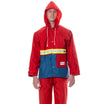
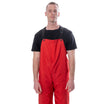
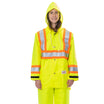
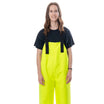
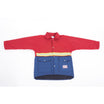
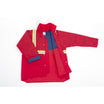

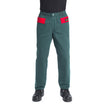
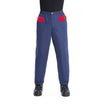
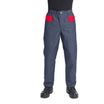
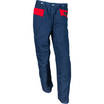
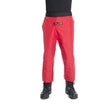
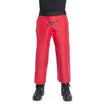
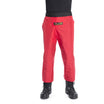
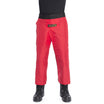
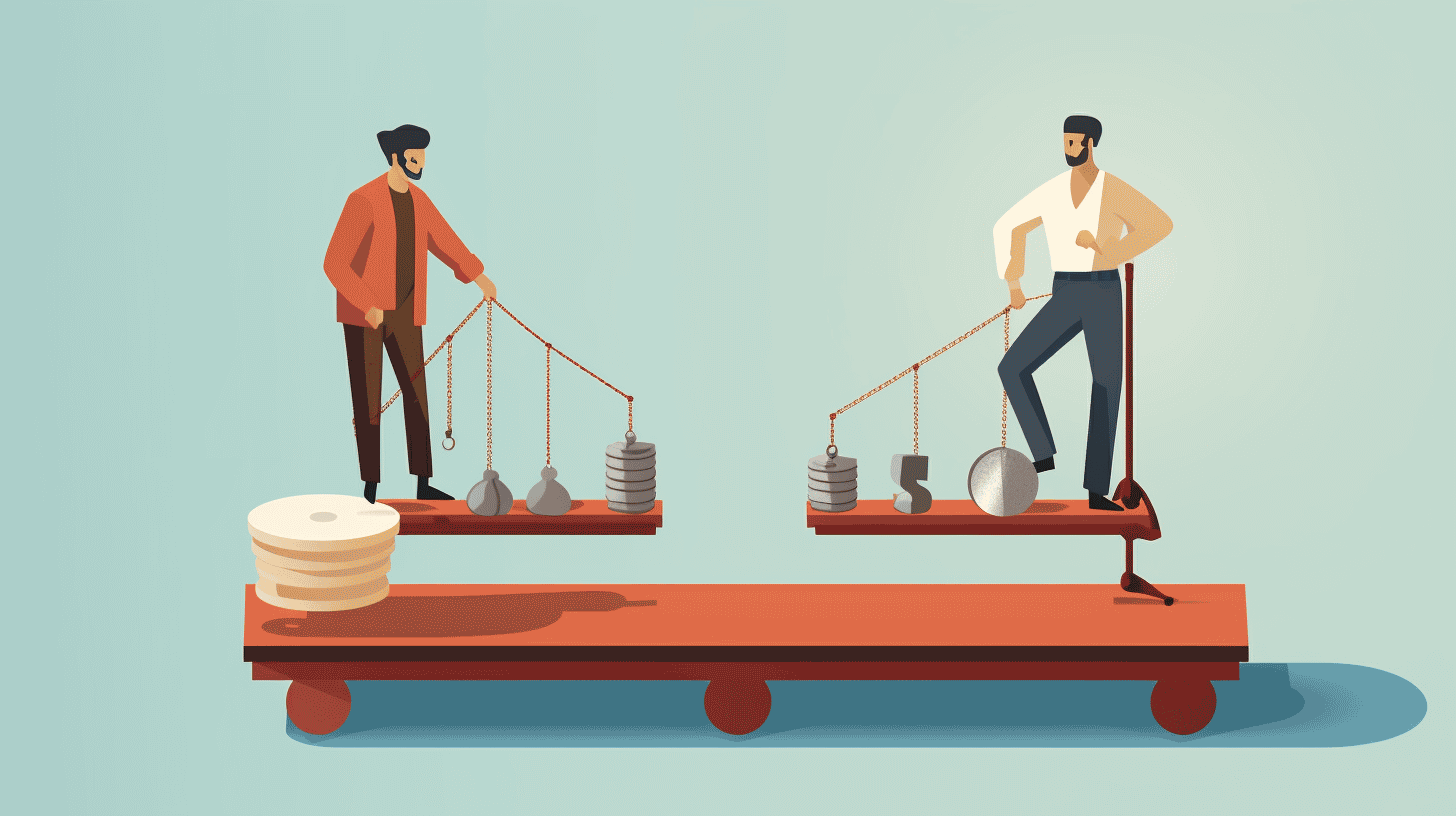


Leave a comment
This site is protected by hCaptcha and the hCaptcha Privacy Policy and Terms of Service apply.